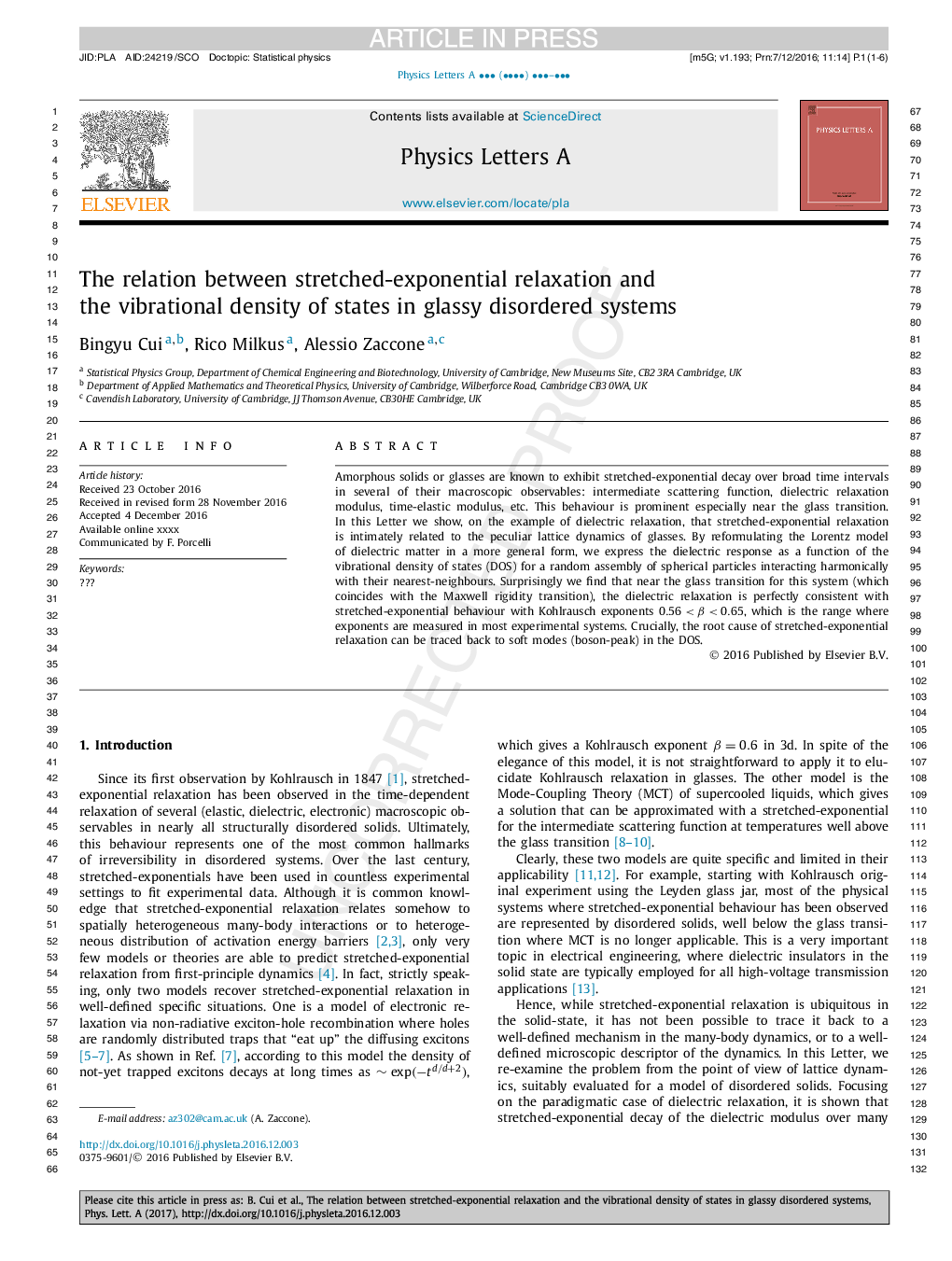| Article ID | Journal | Published Year | Pages | File Type |
|---|---|---|---|---|
| 5496785 | Physics Letters A | 2017 | 6 Pages |
Abstract
Amorphous solids or glasses are known to exhibit stretched-exponential decay over broad time intervals in several of their macroscopic observables: intermediate scattering function, dielectric relaxation modulus, time-dependent elastic modulus, etc. This behaviour is prominent especially near the glass transition. In this Letter we show, on the example of dielectric relaxation, that stretched-exponential relaxation is intimately related to the peculiar lattice dynamics of glasses. By reformulating the Lorentz model of dielectric matter in a more general form, we express the dielectric response as a function of the vibrational density of states (DOS) for a random assembly of spherical particles interacting harmonically with their nearest-neighbours. Surprisingly we find that near the glass transition for this system (which coincides with the Maxwell rigidity transition in this model), the dielectric relaxation is perfectly consistent with stretched-exponential behaviour with Kohlrausch exponents 0.56<β<0.65, which is the range where exponents are measured in most experimental systems. Crucially, the root cause of stretched-exponential relaxation can be traced back to soft modes (boson-peak) in the DOS.
Related Topics
Physical Sciences and Engineering
Physics and Astronomy
Physics and Astronomy (General)
Authors
Bingyu Cui, Rico Milkus, Alessio Zaccone,
